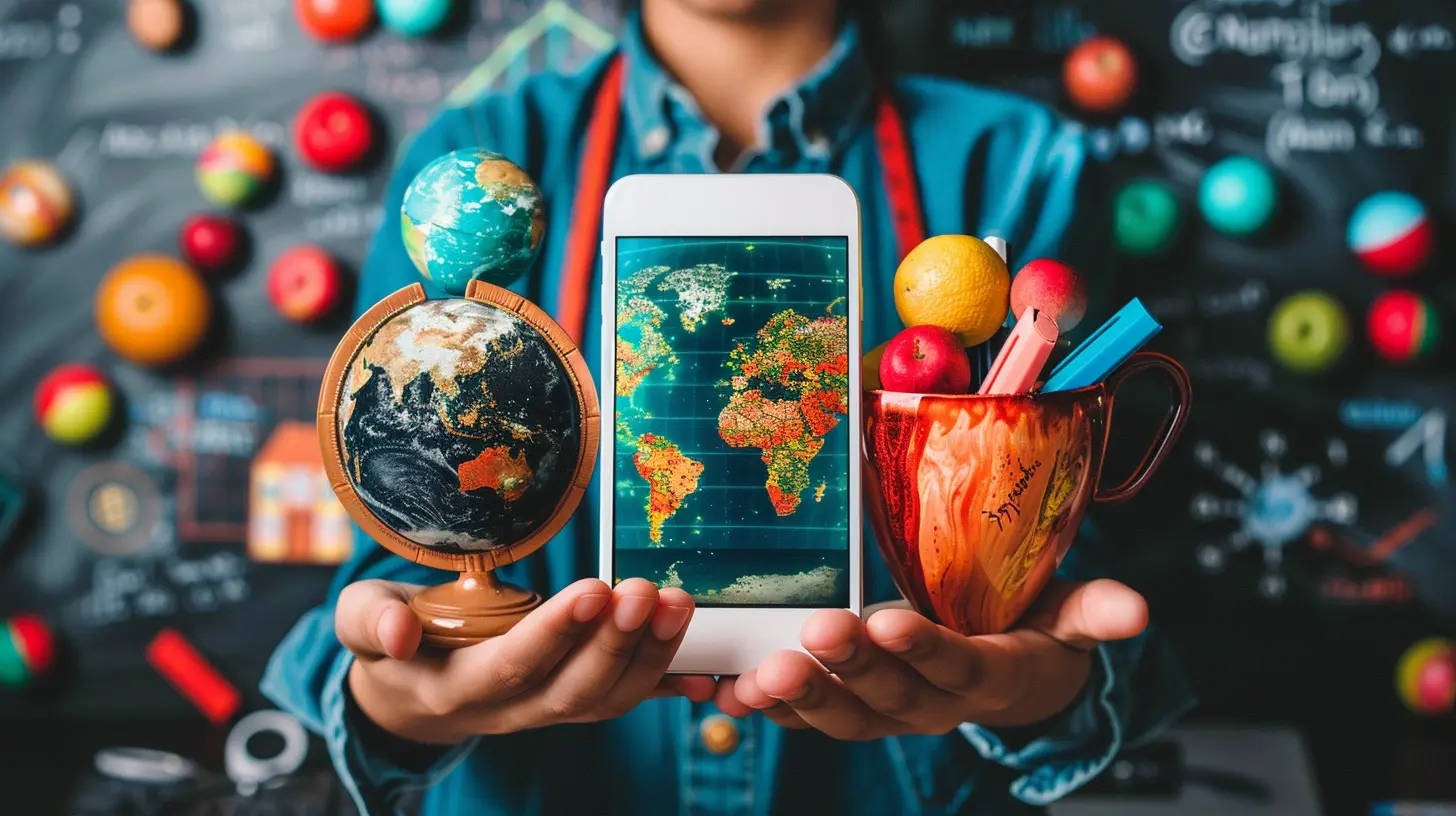How Mobile Learning is Transforming Education Access Worldwide
4 July 2025
Education is evolving, and mobile learning (m-learning) is leading the charge. With a smartphone or tablet in hand, students can now study anytime, anywhere, breaking traditional barriers that once made learning difficult. From remote villages to bustling cities, mobile learning is creating unprecedented opportunities for students and educators alike.
But just how powerful is this shift? And why is mobile learning considered a game-changer in education? Let’s dive in and find out how mobile technology is revolutionizing access to education across the globe.

What is Mobile Learning?
Mobile learning is an educational approach that uses smartphones, tablets, and other portable devices to facilitate learning outside traditional classroom settings. It allows students to access educational content, interact with peers and teachers, and complete coursework from virtually anywhere.Unlike conventional education, which is often limited by location, resources, and rigid schedules, mobile learning offers flexibility, making education more accessible to those who might otherwise miss out.

Why Mobile Learning Matters
For many students, access to quality education has always been a challenge. Limited resources, geographical barriers, and financial constraints often stand in the way. Mobile learning helps bridge this gap by providing:- Affordability – Digital educational content is often cheaper than physical textbooks and traditional courses.
- Accessibility – Anyone with a mobile device can access lessons, no matter where they are.
- Flexibility – Students can learn at their own pace without the constraints of fixed schedules.
- Interactivity – Learning apps and online platforms make studying engaging and effective.
This shift is particularly important in underprivileged areas where traditional schooling is out of reach due to financial, cultural, or geographical limitations.

The Impact of Mobile Learning on Education
Let’s take a closer look at how mobile learning is transforming education worldwide.1. Breaking Geographical Barriers
One of the most significant benefits of mobile learning is its ability to reach students in remote and rural areas. In many countries, children must travel long distances to attend school, which isn’t always feasible. Mobile learning eliminates this challenge by delivering education directly to their mobile devices.Platforms like Khan Academy, Coursera, and Udemy provide free or affordable courses that anyone with an internet connection can access. In regions with unstable internet, offline learning apps allow students to download lessons and access them later.
2. Empowering Underserved Communities
Millions of students worldwide lack access to quality education due to poverty, conflict, or social inequalities. Mobile learning offers a lifeline to these learners by providing affordable and flexible education solutions.For example, in Africa, initiatives like Eneza Education provide SMS-based learning to students who don’t have smartphones or stable internet connections. This simple yet effective method helps children continue their education even in the most challenging circumstances.
3. Revolutionizing Traditional Learning Methods
Gone are the days of static textbooks and one-size-fits-all lessons. Mobile learning brings interactive education to life. With the use of gamified apps, quizzes, and multimedia resources, students can engage with learning material in a way that is both enjoyable and effective.Apps like Duolingo use interactive techniques to make language learning fun, while Google Classroom allows teachers to distribute assignments and provide real-time feedback. These digital tools keep students motivated and make education a more immersive experience.
4. Increasing Lifelong Learning Opportunities
Education isn’t just for school-aged students. Mobile learning has provided adults with the opportunity to continue learning throughout their lives. Whether it’s developing a new skill, earning a certification, or pursuing a career change, mobile education platforms like LinkedIn Learning and Skillshare make it easier than ever to upskill and grow.This accessibility empowers people to take control of their own learning journeys, regardless of age or background.
5. Supporting Teachers and Educators
Teachers aren’t left out of the mobile learning revolution. With a smartphone or tablet, educators can access teaching resources, collaborate with other professionals, and receive professional development training.Many platforms provide virtual classrooms, live lectures, and AI-powered tools that simplify lesson planning and student assessments. This shift helps teachers deliver high-quality education more effectively, even in resource-limited environments.

Challenges in Mobile Learning
While mobile learning offers incredible advantages, it’s not without its challenges. Here are some key obstacles that still need to be addressed:1. Internet Connectivity Issues
In many rural areas, lack of internet access remains a major problem. While offline resources help, a more permanent solution involves expanding network coverage and making internet access more affordable.2. Digital Divide
Not every student has access to smartphones or tablets. Socioeconomic disparities mean that some learners are left behind. Governments and educational organizations must work to provide low-cost devices and internet access to make mobile learning truly inclusive.3. Screen Time Concerns
With education moving online, excessive screen time and digital fatigue are concerns for both students and teachers. It’s important to strike a balance between mobile learning and offline activities to maintain health and well-being.4. Quality of Educational Content
Not all mobile learning resources are created equal. Ensuring that students receive high-quality, well-structured, and credible educational material is essential. Regulatory bodies and educators must collaborate to maintain high standards in mobile education.The Future of Mobile Learning
The rise of mobile learning is just the beginning. With advancements in technology, the future looks even brighter. Here are some emerging trends that will further enhance mobile education:1. Artificial Intelligence in Education
AI-driven learning platforms personalize lessons based on individual learning styles and progress. This ensures that students receive tailored content suited to their needs, making learning more efficient and enjoyable.2. Augmented Reality (AR) & Virtual Reality (VR)
Imagine studying history by virtually walking through ancient civilizations or learning science by interacting with 3D models of molecules. AR and VR are making immersive learning a reality, providing learners with enhanced educational experiences.3. 5G and Faster Connectivity
As 5G continues to roll out, mobile learning will become even more accessible. Faster internet speeds mean smoother video lessons, real-time interactivity, and seamless online collaboration.4. Blockchain for Education Credentials
Blockchain technology is being explored for storing and verifying academic credentials. This could make degrees and certifications more secure and universally recognized, reducing fraud and making student records more accessible.
Conclusion
Mobile learning is undeniably reshaping education as we know it. By breaking down barriers, offering flexibility, and making education accessible to even the most underprivileged learners, it’s proving to be a powerful tool for creating a more inclusive world.Sure, challenges exist. But with continued innovation and efforts from governments, educators, and tech companies, mobile learning will only become more effective and widespread in the coming years.
So, whether you’re a student looking to enhance your skills, a teacher wanting to improve your lessons, or someone simply curious about lifelong learning, mobile learning is here to revolutionize the way we learn—one tap at a time.
all images in this post were generated using AI tools
Category:
Educational TechnologyAuthor:

Anita Harmon
Discussion
rate this article
1 comments
Reina Peterson
Great article! Mobile learning truly revolutionizes education access, making learning opportunities available to everyone, everywhere. Excited for the future!
August 2, 2025 at 4:00 AM

Anita Harmon
Thank you! I'm glad you enjoyed the article. I share your excitement about the future of mobile learning!


